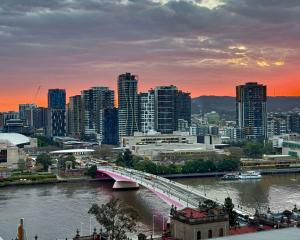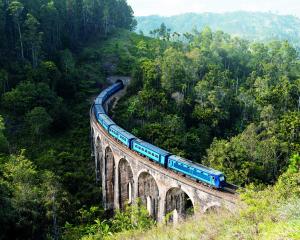
There aren’t that many birds that can kill you. I mean, there’s chicken of course; if you should so much as glance at a raw chicken leg, you’ll die turning yourself inside out with campylobacter or salmonella. But living birds, not so much. The screech owl could scare you to death, perhaps, and certainly a magpie defending its nest can hurt you. But in general, our feathered friends are not very well-equipped to tangle with humans.
Meet the cassowary — "the most dangerous bird in the world". As tall as a person, with knife-like claws, and the capacity to run as fast as a car, a cassowary can, in fact, kill people. If you ever doubted that birds are descendants of dinosaurs, the cassowary would convince you.


So you can imagine my dismay when His Lordship looked up one evening from a tall pile of Australian bird books and said "wouldn’t you love to see a cassowary?" Swallowing my natural response (which was: "not if it’s the last thing I see"), I agreed that our next trip would be to northern Queensland. Those of you who follow this newspaper closely will know that I’m a marine scientist. It did not escape my notice that the Great Barrier Reef was right next door. After some negotiations, it was agreed that we would snorkel on the reef as well as court death while birdwatching.
Like the birds (though unlike cassowaries), we flew. Dunedin to Auckland to Melbourne, overnight at the tiny-roomed, featureless airport hotel, then on to Cairns. And back via Christchurch. Rising at 2:30 am is never my forte, the various queues meant we missed one flight, and baggage took forever to arrive. The best thing was how easy and pleasant customs and immigration are in Christchurch compared with everywhere else. My mother told me if you can’t say something nice, don’t say anything at all, so that’s all I’m saying about the air travel.

Of course, you can’t actually go into the sea here — if the sharks and crocodiles don’t eat you, the box jellies will sting you to insanity — hence the pool.
At the southern end of the Esplanade is the marina, where we and a few thousand other people caught a boat out to the Great Barrier Reef (GBR). There are all kinds of boats heading in all different directions all day long — we ended up choosing Ocean Freedom because it was small, comparatively inexpensive and offered breakfast, lunch, afternoon tea and all the gear at two snorkel destinations. That’s how us Kiwis like our ocean — uncrowded, affordable, fully catered.
If you have snorkelled on fringing reefs right off the beach, the GBR is quite surprising — here the corals grow up to the surface over 30km from shore. It takes about an hour to get there! And then, there’s no land to orient yourself to. You just slip into the water and swim near the boat. It takes a little getting used to, but the corals, rays, giant clams and fish are spectacular. As it was midwinter, we were quite glad of the provided wetsuits.

Back in Cairns, we found several very nice restaurants, and we particularly enjoyed a Balinese one called Bayleaf. I have never before seen "sate buaya" on a menu — crocodile satay, six pieces for $16.95, gluten free.
The next day His Lordship got behind the wheel of our rental car and pointed it inland. Cassowaries coming right up? I asked. No, first we were going to find a bustard. And to do that, we had to go to Julatten.
Don’t feel bad, nobody else has heard of Julatten either — population less than 2000, located in the Atherton Tablelands, about three and a-half hours from Cairns. It’s the kind of drive where you think you should have brought more food and water. How ironic if we went to see cassowaries and instead we starved to death!

The plan for bustard viewing was to find remote little farming roads and drive slowly along, looking for a head sticking up out of the grass. It wasn’t long before I found one! Filled with triumph, I pointed it out to His Lordship. But alas, it was only an emu! This enormous bird walked right in front of the car and posed just outside my window for a photo in front of a field of cotton. No cause for alarm — it’s only the eighth-most dangerous bird in the world.
Three bustards later duly made their appearance, and we added them to our list of Huge Birds in Australia. And we headed further north, to the Daintree. Along the roadsides we saw shrikes, parrots, swallows, doves, birds of prey, bee-eaters — a panoply of birds.
In a place called Cape Tribulation, we found Floravilla: "Supernatural Biodynamic Organic Ice Cream Made Here". His Lordship’s third-most favourite thing (after birds and wine) is ice cream.

This is the third-tallest, second-heaviest and most dangerous of all living birds. They stand up to 2m tall, but the one we saw was more like 1.5m (about my height). His mostly black feathers were in vivid contrast to his red and blue neck. He was crowned with a dramatic head piece, called a casque. I looked down at the bulky three-toed feet with long sharp claws and shivered.
His Lordship leaned in close and whispered reassuringly, "Don’t worry, they aren’t usually aggressive unless they are defending a chick." Right on cue, a smaller brown version emerged from the shrubbery.

Male cassowaries do almost all the caregiving. They do the egg-sitting, and protect the chicks for up to nine months — the one we saw was probably about to depart into adulthood, making room for the next clutch. The males take the young ones around their large (up to 2.8ha) territories, showing them good fruits and little animals to eat. They swallow everything whole, and are important distributors of seeds through their large piles of poop.
In northern Australia, the southern cassowary population has been in decline. While we could blame vehicles, wild boars and dogs, all of those things have had little apparent effect on the healthy and growing cassowary population in similar New Guinea. In Australia, it’s the loss of much of their deep forest habitat, knocked down both by people and cyclones, that mostly threatens these huge magnificent birds.
Birdwatchers get up early and go to bed early. After a quick dinner, we were in bed before 8pm. It was dark, and the eco-lodge was humming with insects. Into the silence, His Lordship whispered happily, "we saw a cassowary!" and we smiled at this rare, special encounter.

Much later I discovered that cassowaries may be the first bird ever to have been domesticated by humans. In Papua New Guinea, some tribes raised cassowary chicks as "semi-tame" poultry, thousands of years before chickens became the deadliest bird. Of the 200-plus recorded attacks by cassowaries, only two have killed people. In contrast, poultry-related food poisoning by campylobacter and salmonella kills about 600 people in the United States every year (five in Australia, none in New Zealand).
But back to the birds ... We visited mangrove boardwalks, botanic gardens, wetlands and a beach. I vividly recall a public toilet shaded by gnarled bush, decorated with spiders bigger than my hand. I don’t know if they are harmful but they certainly look like they could eat a small person.
Really big birds are great, especially for those of us who are a bit myopic and find tiny birds hard to see. I loved seeing bustards, emu and cassowaries. But we had other great bird encounters too. The Victoria’s riflebird, flicking his dramatic black wings at incredible speed as he practised for mating dances when spring came. The golden bower bird! The big-headed beach thick-knees and bush thick-knees! The gorgeous blue of kingfishers. The quick brightness of bee-eaters. Elusive mangrove robins.

In a week in tropical northern Queensland we saw 132 species of birds. And I can’t tell you how many times people apologised for how cold it was (20°C was the minimum) and how few birds there were (birds were absolutely everywhere). We saw a good proportion of the about 850 species known in Australia despite it being winter. Nevertheless, a trip during the actual birdwatching season could be called for — if we dare.
Despite facing death by drowning, sunburn, shark attack, spider bite, crocodile satay, snake bite, cassowary and airport coffee, we made it home to be greeted by a heavy frost, watery sunshine and a tui singing in our garden. Back safe home.












